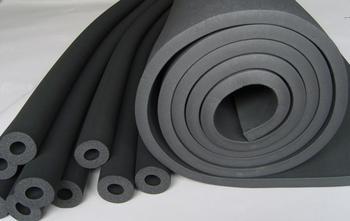 According to recent data from the business club, the rubber and plastic market in May showed a mixed performance, with some signs of improvement in the balance between supply and demand compared to the previous month. Analysts noted that while the market was slightly better than April, it still faced challenges, particularly in terms of demand.
Business analyst Xue Jinlei pointed out that the market in May was somewhat stronger than in April due to rising production costs and tighter supply conditions. However, he emphasized that demand did not see any significant improvement, which means the overall outlook remains cautious. He warned that the market might not see much progress in June and could even face a second decline if current trends continue.
Looking at price movements, 11 products in the rubber and plastics sector saw price increases in May, representing 5% of the monitored commodities. Among them, one product rose by more than 5%. The top three gainers were butyl rubber 1751 (up 6.77%), LDPE (up 4.02%), and HDPE (up 2.93%). On the other hand, six products experienced price drops, with POM falling the most at -3.91%, followed by nitrile rubber N41 (-3.03%) and butadiene rubber (-2.35%).
From a supply and demand perspective, the general plastics segment showed improved balance. Since April, an increase in petrochemical plant maintenance has reduced production capacity, leading to lower inventory levels. In May, this trend continued, with certain products like polyethylene and polystyrene facing supply shortages. Limited production and price support helped stabilize the market to some extent.
However, the situation for synthetic and natural rubber remains more challenging. Natural rubber, in particular, is still in the process of de-stocking, and the entry of new plastic products has further complicated the market. Additionally, the downstream tire industry continues to be sluggish, with many manufacturers reducing output and offering promotions to stimulate demand. This ongoing pressure suggests that the rubber and plastic market will remain volatile in the coming months.
According to recent data from the business club, the rubber and plastic market in May showed a mixed performance, with some signs of improvement in the balance between supply and demand compared to the previous month. Analysts noted that while the market was slightly better than April, it still faced challenges, particularly in terms of demand.
Business analyst Xue Jinlei pointed out that the market in May was somewhat stronger than in April due to rising production costs and tighter supply conditions. However, he emphasized that demand did not see any significant improvement, which means the overall outlook remains cautious. He warned that the market might not see much progress in June and could even face a second decline if current trends continue.
Looking at price movements, 11 products in the rubber and plastics sector saw price increases in May, representing 5% of the monitored commodities. Among them, one product rose by more than 5%. The top three gainers were butyl rubber 1751 (up 6.77%), LDPE (up 4.02%), and HDPE (up 2.93%). On the other hand, six products experienced price drops, with POM falling the most at -3.91%, followed by nitrile rubber N41 (-3.03%) and butadiene rubber (-2.35%).
From a supply and demand perspective, the general plastics segment showed improved balance. Since April, an increase in petrochemical plant maintenance has reduced production capacity, leading to lower inventory levels. In May, this trend continued, with certain products like polyethylene and polystyrene facing supply shortages. Limited production and price support helped stabilize the market to some extent.
However, the situation for synthetic and natural rubber remains more challenging. Natural rubber, in particular, is still in the process of de-stocking, and the entry of new plastic products has further complicated the market. Additionally, the downstream tire industry continues to be sluggish, with many manufacturers reducing output and offering promotions to stimulate demand. This ongoing pressure suggests that the rubber and plastic market will remain volatile in the coming months.Zhejiang Sealand Technology Co., Ltd. is a trustworthy manufacturer of LPG Mass Flow Meter, LPG Mass Flowmeter, LPG Flow Meter, LPG Flowmeter, LPG meter, ATEX, IECEx & CE approved.
Sealand have DN03 to DN150 size meters and are developing bigger models. Each meter can be connected with your computer through a USB-to-RS485 converter. The detail steps are as follows. Connect the meter and computer with a USB-to-RS485 converter( converter A+ end to transmitter A+ end, B- to B-, and GND to GDN); turn to device manager of the computer to check COM port connected with meter. Start the software, select the right COM port and click Connect; do not change any other parameters (if you do not know the right one, click Automatic options on the left, click Connect, plug & unplug the transmitter, and then check if it is connected). You can click Connect on the tool bar to disconnect or connect again. It will shown Connected/Not Connected at the bottom of this interface.
LPG Mass Flow Meter, LPG Mass Flowmeter, LPG Flow Meter, LPG Flowmeter, LPG meter
Zhejiang Sealand Technology Co., Ltd. , https://www.sealandflowmeter.com